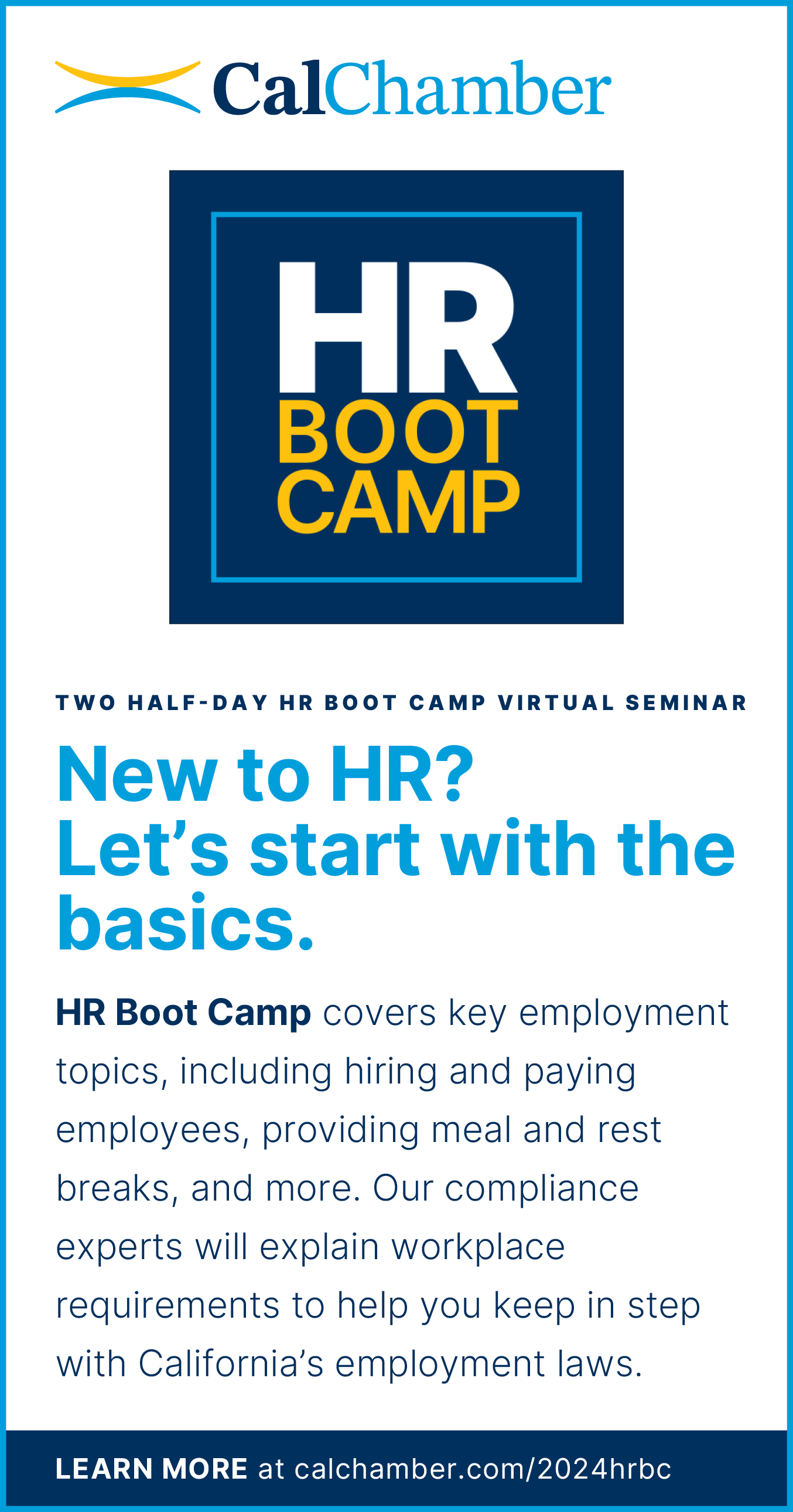With the signing of the legislation mandating that employers provide employees with paid sick leave starting July 1, 2015, many employers are questioning what options they have to comply with the new law and how existing or newly adopted employer policies will coordinate with this new mandate.
AB 1522 (Gonzalez; D-Sherman Heights; Chapter 317) provides employers with three options by which to satisfy the requirement to provide employees with paid sick leave, thereby offering employers some flexibility to implement a new or existing policy.
Accrual Method
The first option employers have to provide paid sick leave is the statutory mandated accrual method that requires an employee earn one hour of paid sick leave for every 30 hours worked.
Under this option, an employer will have to track the hours of each employee to determine when the employee has accrued one hour of paid sick leave. An employer may cap an employee’s accrual at six days or 48 hours. Any accrued, unused paid sick leave must be carried over to the following year.
‘Front Loading’ Policy
The second option for providing paid sick leave is a “front loading” employer policy that provides an employee with at least three days or 24 hours of paid sick leave, paid leave, or paid time off at the beginning of each year.
Under a front loading policy, an employee does not accrue leave during the year, as the employee receives all of the paid sick leave or paid time off on the first day of the year. Under this option, an employer does not have to track the employee’s hours for accrual and does not have to carry over any unused paid sick leave.
Employer Policy
The third option is an employer policy that provides an employee with at least three days or 24 hours of paid sick leave in a 12-month period, year of employment, or calendar year.
Under this option, an employer can determine the accrual rate or method, so long as the annual amount provided to all employees is at least three days or 24 hours of paid sick leave, paid time off, or other paid leave.
Specifically, Labor Code Section 246 (e)(2) was amended into the bill at the end of session to address employers’ concern that although they generally provide at least three days of paid time off or paid sick leave each year to their employees, the accrual method may not be on an hourly basis.
A majority of employers allow employees to accrue paid leave on a pay period basis, as it is easier to administer, especially for a large workforce, than tracking each individual employee’s hours worked.
Section 246 (e) reflects such employer policies by stating that an employer does not have to provide sick leave in addition to what they already offer if the employer policy either:
• mirrors the accrual, carry over and use requirements set forth in AB 1522; or
• provides employees with at least three days or 24 hours of paid sick leave each year, regardless of the actual accrual rate.
Interpreting this section otherwise would essentially render Section 246 (e)(1) meaningless. Section 246 would not provide two options for an employer policy if the intent and requirement was that any employer policy had to match the specific accrual method set forth in AB 1522.
Moreover, Section 246 (e)(2) is not just limited to “front loading” policies, as such policies are separately recognized in the bill under Labor Code Section 246 (d). Section 246 (d) references subdivision (e) to acknowledge that an employer must have a policy for front loading, not to limit Section 246 (e)(2) to only a front loading policy.
Nothing in 246(e)(2) requires that an employer provide the three days or 24 hours at the beginning of the year; it just requires that an employer provide an employee with three days or 24 hours of paid time off or paid leave each year.
Flexibility
These three options provide an employer with the necessary flexibility to determine which method of offering paid sick leave fits best with the employer’s specific workforce and environment. Employers have until July 1, 2015 to determine which option to utilize.
Under any of the three options, however, the employer must allow an employee to use the accrued paid sick leave or paid time off for the same purposes and under the same conditions as set forth in AB 1522. Any employer policy should reference these purposes and conditions.



